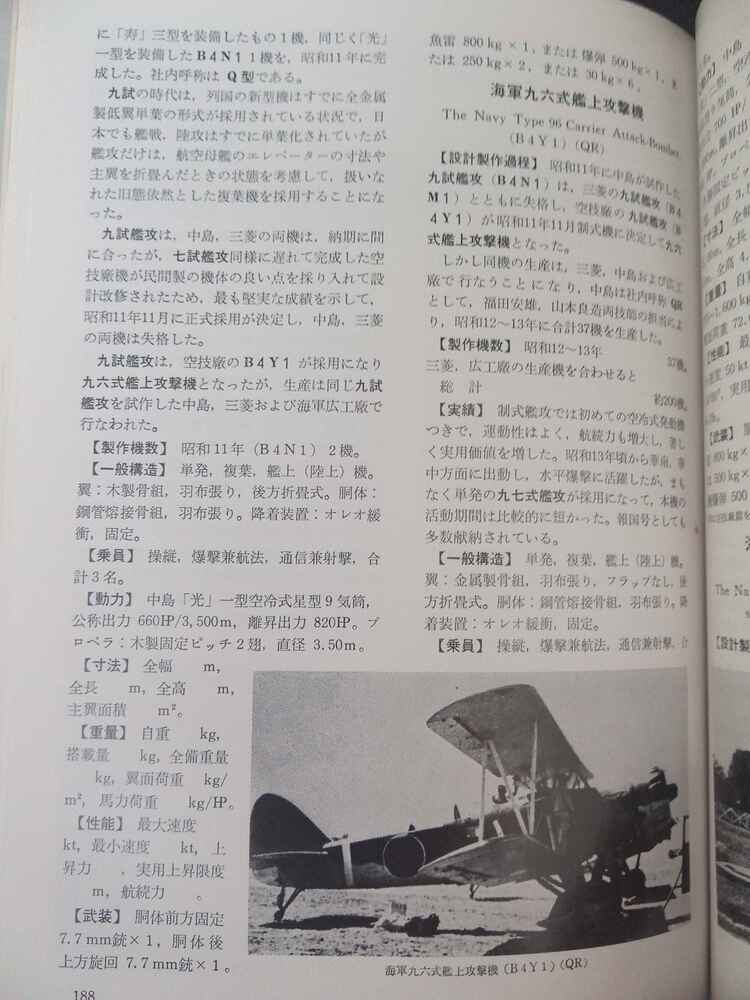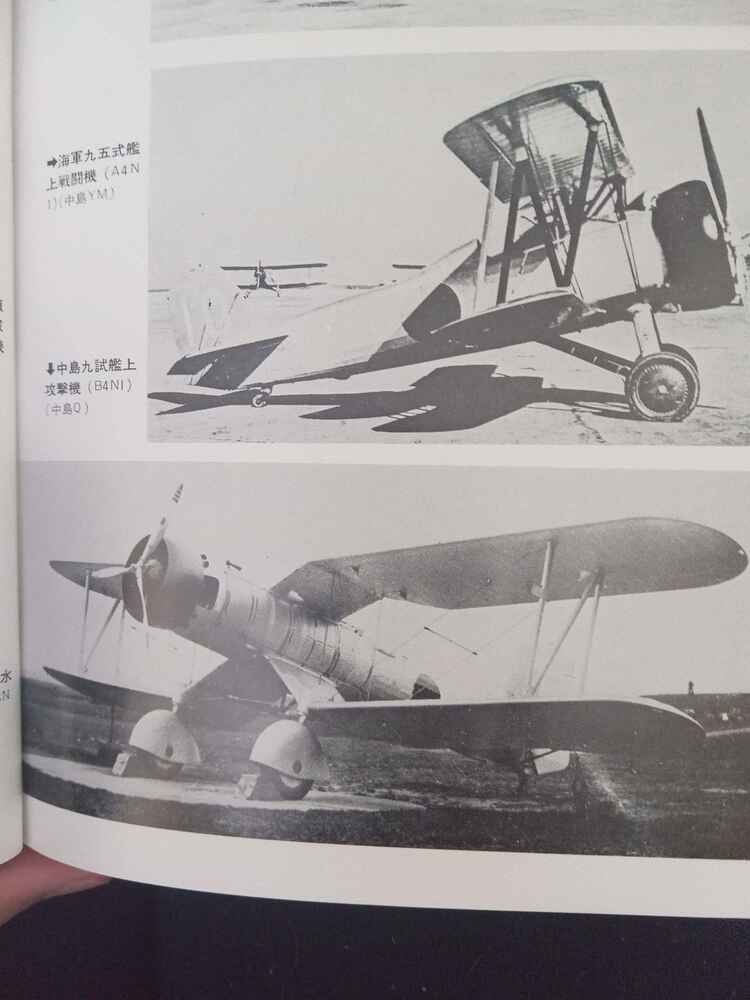Experimental 7-Shi Carrier Attack Aircraft (B3N1) (Company designation Y3B)

History Attack variant
History:
Spoiler
As part of the Navy’s Continuous Development Programme, it placed an order with Mitsubishi and Nakajima in April 1932 for a new carrier attack bomber to replace the ill-reputed Mitsubishi Type 89 Carrier Attack Aircraft.
The akajima design, which was the responsibility of Takao Yoshida, was far from conventional in that this nonstaggered biplane had its wings attached to the fuselage in both gull and inverted-gull wing fashion, forming an X at the fuselage. Its non-retractable undercarriage was attached to the lower wing at the bottom of the gull attachmentpoint.
Saddle-type fuel tanks were fitted on the sides of the fuselage as on the Chance Vought influenced Type 90-2 Reconnaissance Seaplane and the Type 90-2 Carrier Fighter. Two prototypes were built in 1933 with the short designation B3NI, and delivered to the Navy for evaluation but they failed to win Navy approval. Mitsubishi submitted its 7-Shi Carrier Attack Aircraft but it crashed on take off due to engine failure. Because of these failings, the Navy began with a new design competition for a 9- Shi Carrier Attack Aircraft.
This was a time when the major aircraft companies, Mitsubishi, Nakajima, Aichi and Kusho, were attempting to develop a three-seat carrier-based aircraft, but because of the increase in size and weight of these aircraft, a suitable powerplant remained a problem. For the Nakajima entry the company used the new 700hp Nakajima Hikari, but at this earl y stage it had yet to achieve reliability.
Empty weight 2,000kg (4,409Ib);
loaded weight 3,800kg (8,3 nIb);
wing loading 76kg/sq m (15.5Ib/sq ft);
power loading 5.4kg/hp (11.9Ib/hp).
Maximum speed 120kt (138mph);
minimum speed 50kt (57.5mph);
climb to 3,000m (9,843ft) in 12min;
service ceiling 5,500m (18,044ft);
endurance 6hr.
Two built in 1933.
Statistics:
Single-engine biplane carrier attack bomber.
Fuselage of welded steel tube construction, metal frame wings, with fabric covering.
Rearward folding wings for stowage.
Crew of three; pilot, bombardier/navigator and radio operator/gunner.
700hp akajima Hikari 2 nine cylinder air-cooled radial engine, driving a fixed-pitch three-bladed metal propeller.
One dorsal flexible 7.7mm machinegun.
Bomb load: One 800kg torpedo, or one 800kg bomb, or one 500kg bomb, or two 250kg bombs or equivalent.
Span 14m (45ft 11 1/4in); length 10m (32ft 9 1/2in); height 3.80m (12ft 5 1/2in); wing area 50sq m (538.213sq ft).
Empty weight 2,000kg (4,409 Ib);
loaded weight 3,800kg (8,377 Ib);
wing loading 76kg/sq m (15.5 Ib/sq ft);
power loading 5.4kg/hp (11.9Ib/hp).
Maximum speed 120kt (138mph);
minimum speed 50kt (57.5mph);
climb to 3,000m (9,843ft) in 12min;
service ceiling 5,500m (18,044ft);
endurance 6hr.
Two built in 1933.
More pictures:
The Poll
- Yes
- No (leave in the comments to why)
- Other (leave in the comments to why)
Source:










